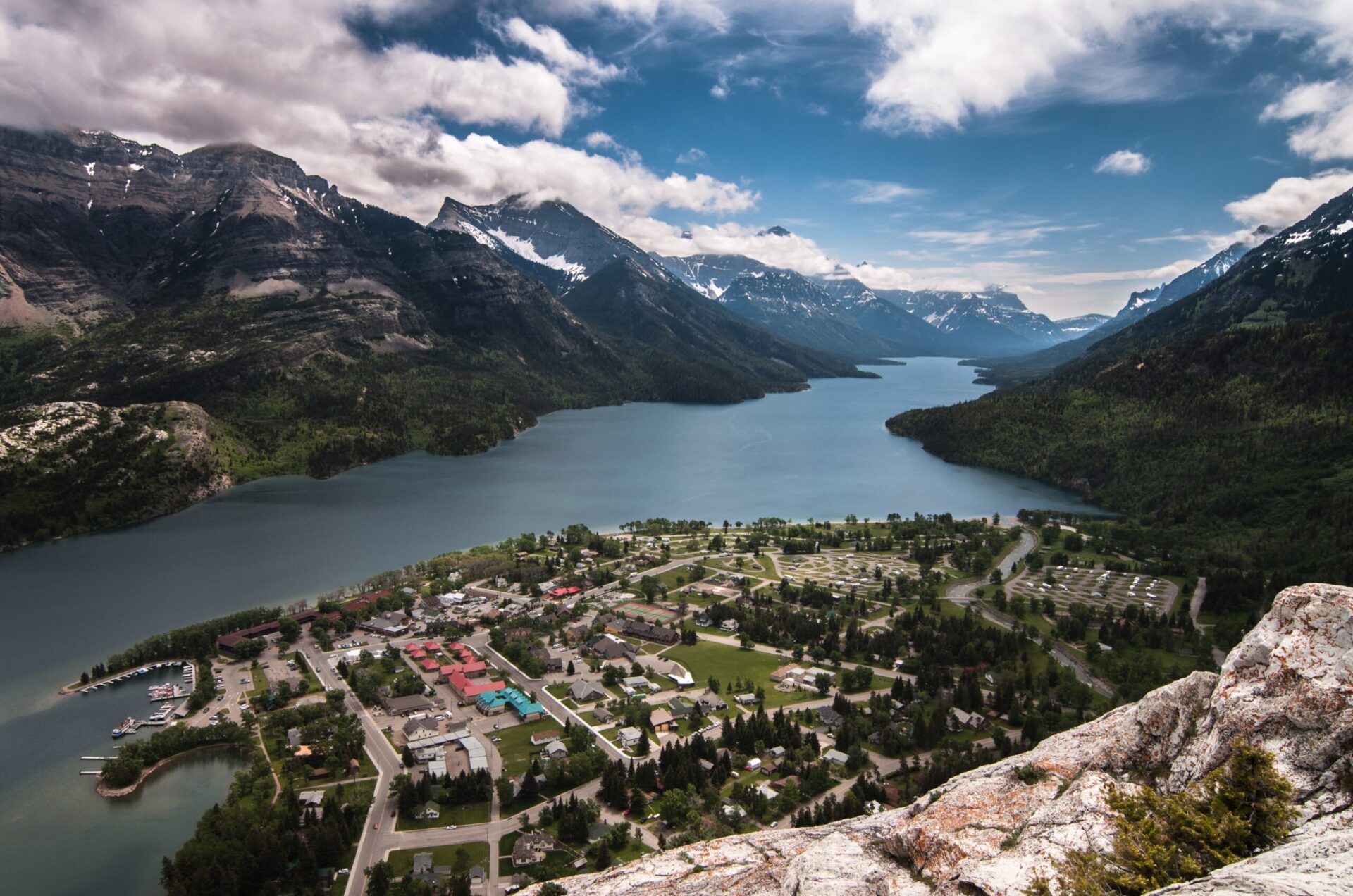Article /
An Interview with Roy Brooke, Natural Assets Management Expert

Natural Assets Management in BC
Grand Forks sits at the confluence of the Granby and Kettle rivers in BC’s Kootenay region. The city saw devastating flooding in 2018 which forced nearly 2,800 of the city’s 4,000 people from their homes. In the aftermath of the flooding the city decided a new approach to planning for flooding events was needed. The city considered flood-mitigation provided by the Kettle River floodplain, an existing asset of the municipality. The floodplain had the potential to provide between $500-$3,500 per hectare in reduction of cost of damage to the city’s downtown core during flood events.
When it comes to our changing climate, we tend to think of the repercussions as far away event. Climate change is right at our front door and our local governments are already implementing strategies to maintain the health and safety of our communities as we start to see its effects. Municipalities in BC are changing their assets management strategies to brace for these environmental changes. Nanaimo, Grand Forks and the District of West Vancouver, to name a few, are local governments from across BC that are investing in their natural assets.
I spoke with Roy Brooke, facilitator of Royal Roads University’s upcoming course, Natural Asset Management: An Introduction to Making Nature Count in Canadian Municipalities. Roy is the Executive Director at Municipal Natural Assets Initiative (MNAI) and has worked at many different levels of government bringing climate resilience strategies to communities in BC, Canada, and abroad.
The interview has been lightly edited for space and clarity.Roy Brooke: Natural Assets Management Expert
Brigit: Tell me a little bit about your background. I’d like to know what was your journey that brought you to working in natural assets management?
Roy: The bulk of my career has been spent in environment, sustainability, climate change and natural asset issues in some way, shape, or form. During the 90’s, I worked as a political advisor to Canada’s Environment Minister. This was the era of Amory Lovins, Paul Hawkens and other influential sustainability thinkers of the day. Their ideas, and the opportunity to meet many of them, had a profound impact. In 2003, I moved to the United Nations in Geneva and later in Rwanda, always working at the confluence of environment, development, and humanitarian issues. I also served at the City of Victoria as Director of Sustainability.
My interest in sustainability, climate and nature-related issues was always there, but my concern grew that despite interesting individual efforts on the part of many people, it was rare to see sustainability efforts really hit scale transformative scale commensurate with the challenges and needs.
For example, in many developing countries I’ve worked with, there are a multitude of pilot project, but few are scalable. There may be a great individual solar panel project, but 500 meters away, the people are without electricity as they always have been.
As another illustration, as Director of Sustainability for the City of Victoria I was head of small department, and clearly “the sustainability guy”. In this role you don’t have the big budgets or 2000 staff. Instead you’ve got five people, a small budget, and in effect, you are trying to impact the real business of the day, in effect, from the outside. I remember my first Council meeting. I was sitting next to a plant in the corner of the room. The mayor said, ‘Oh, good Roy brought his tree along’. Which is funny at one level, at another level you’re like, yeah, that’s kind of how everyone understands sustainability – as peripheral, not core work – – and that makes real change extraordinarily hard.
Brigit: Right, rather than a necessity they see it as sort of a token.
Roy: Yes, it’s often the parsley at the side of the plate. By contrast, natural asset management is very much about core local government service delivery and resilient infrastructure as well as ecosystem health. Moreover, it is rooted in modern, structured asset management. These are processes that local governments are required to do anyway, so it is inherently replicable and scalable. Natural asset management translates ecosystems health into a core business, financial and operational proposition, as opposed to ‘nice-to-do’ stuff. That’s one of the things I love about it.
Brigit: In terms of the scalability, rather than grassroots projects where, when the funding runs out on it, it loses traction. What you’re saying is this strategy can make [natural assets] a central part of the infrastructure of the system.
Roy: Exactly. There are 3,573 local governments in this country. Because natural asset management is built on core financial and asset management systems and focuses on delivery of core services, I don’t think its lunacy to think that in 10 years most, if not all of them will be doing this.
Brigit: Why do you think natural assets should be included in a municipality’s asset management strategy? Why should this be a central piece of what local governments are working on?
Roy: Natural assets provide services such as stormwater management and coastal zone protection to local governments, whether or not they are conceptualizing, recognizing, and acting upon that fact. The services from nature are indisputable. However, when local governments are not understanding the role of natural assets, there is risk of overusing them or insufficiently managing and investing in their health and longevity. So, the issue becomes whether or not local governments have the knowledge, capacity and tools to account for and manage the services that nature provides. Fundamentally, local government is there to provide services to citizens. If you can do so cost effectively and reliably by maintaining healthy, or in some cases rehabilitating and restoring, natural assets, then it’s important to do.
Brigit: In your experience working with municipal governments, what kinds of blind spots have you seen in terms of natural asset management beyond municipalities not recognizing the value of their natural assets. For example, municipalities that are already engaging in natural asset management, are there any particular standout blind spots that you’ve encountered?
Roy: One barrier is that local governments often conceptualize natural assets only in terms of social, cultural and recreational amenities. These are obviously important but leave on the table many other services and amenities for which they could be understanding valuing and managing their natural assets. A second issue is that a certain amount of knowledge, support, tools and capacity are required for local governments to integrate natural assets into their core financial system, and not all organizations have this. Third, there are some misconceptions – things like, ‘Oh, it’s a natural asset, it’s unpredictable! They are risky and we have no tools to measure and understand them in a meaningful way’. This may have been true at one point but is, for the most part, no longer the case.
Brigit: How do natural assets differ from other municipal assets and how does investing in natural assets make communities more climate resilient?
Roy: Let’s draw a comparison. We may know how much water a pipe of a given diameter will move. However, we don’t know what level of service that translates to in a changing climate; we only know how it has performed in the past based on historical data. So, we see some communities for example, will put in a culvert of X width based on the world as it used to be, and two years later, it’s overwhelmed and cannot handle the water from more frequent and intense storms. So then, the community builds a bigger culvert, and it floods out too. Then they end up building a bridge instead of the culverts. All of which costs money. By contrast, we are seeing that natural assets such as wetlands have an inherent adaptability and resilience in the face of climate change, and therefore, in some cases, become more valuable over time. They are a vital part of climate resilience.
Brigit: What can students take away from your course and bring into their day as municipal workers? What kind of practices are you hoping that they bring into the work that they’re doing? It’s a broad question given that people that work in municipalities do all kinds of things. Are there any key outcomes that you really hope your students take into their everyday work?
Roy: That’s a good question. I would hope that they would understand why it’s important to undertake natural asset management. I hope they would also understand, at least in a basic way, how to do it. Like, ‘what should I be doing differently tomorrow than what I’m doing today?’ Finally, I hope that students leave feeling that there’s a growing body of tools and support available should they want to take the journey.
Brigit: You mean employees feeling empowered in doing this in their workplace?
Roy: Yeah, exactly.
Brigit: Thank you so much for doing this [interview] with me. It’s been great to listen to you talk and it’s made me want to take this course even though I don’t work in municipal government!
Roy: I’m glad to hear that. Thank you so much. I appreciate your time.
Sign up for our upcoming ALN course
Check out the upcoming course with Roy Brooke at Royal Roads University in Professional and Continuing Studies. The Course is a 1-day session held on March 10th, 2020 on the RRU campus. If you miss this upcoming course, we will run it again if a few months. Sign up for our newsletter to stay in the loop!
